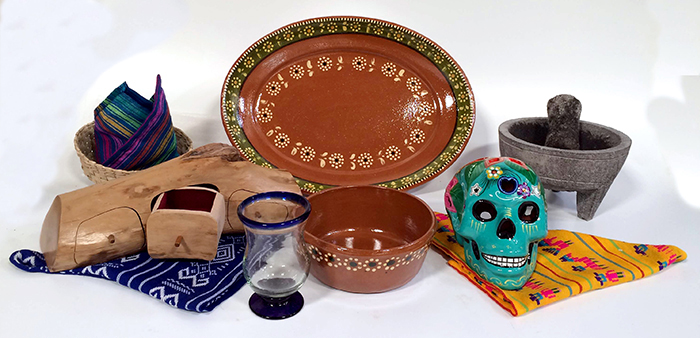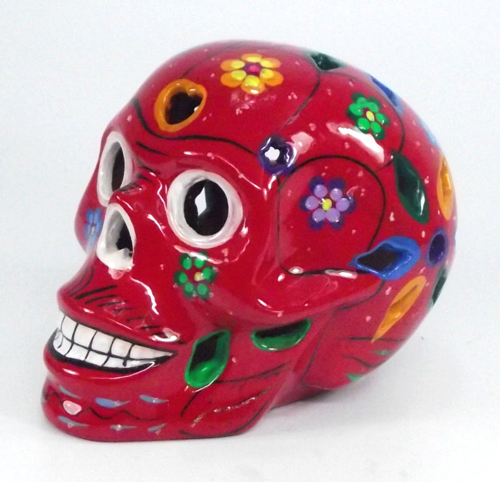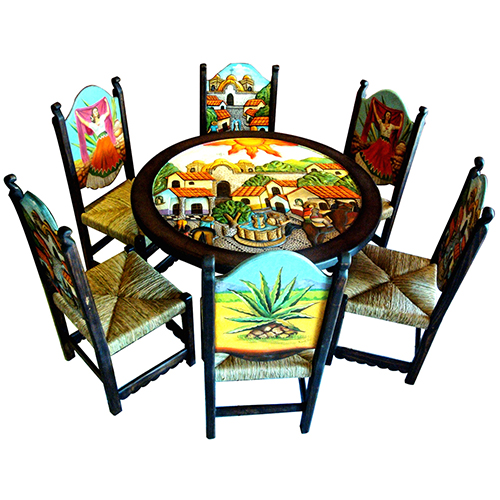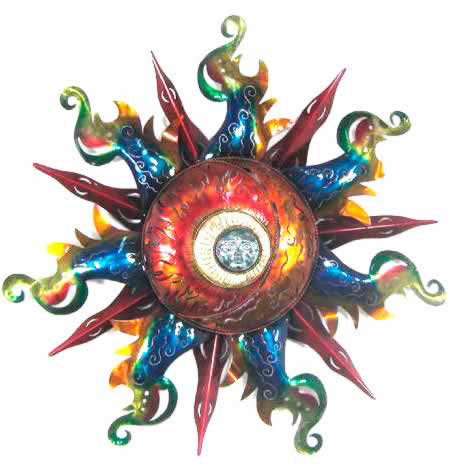Mexican Crafts
Mexican Handcrafts “Artesanias”
Mexican handcrafts and folk art is a complex collection of items made with various materials and fashioned for utilitarian, decorative or other purposes, such as wall hangings, vases,toysand items created for celebrations, festivities and religious rites.[1]These arts and crafts are collectively called “artesanía” in Mexican Spanish. This term was invented in Spanish during the 20th century to distinguish merchandise made by traditional methods versus those made by industrial/assembly line methods. The word is also used to promote traditional products to tourists and as a source of Mexican national identity.[5]Mexican artesanía has its foundations in the crafts of the manypre-Hispanic cultureswithin the country, but 500 years of European influence has transformed it into a mixture of the two and unique to Mexico. Most artesanía produced here shows both European and native influences in the crafting, the design or both.[1]
Artesanía can be defined as those items created by common people, using traditional methods which are well-founded in the past. Most artisans do not have school-based training in their craft, but rather learn it through formal or informal apprenticeship. The term “common people” for Mexico generally applies to people native to rural areas and those outside the upper and middle classes.[1]
For Mexico, artesanía is heavily tied to national identity as well as indigenous identities, and this idea is often played out in movies and television in the country.[1][6]From the early 20th century to the present day, Mexican folk art has inspired famous artists such asDiego Rivera,Rufino Tamayo,José Clemente Orozco,Fernández Ledezma,Luis Nishizawaand many others.[2]Miguel CovarrubiasandSalvador Novodefined true Mexican artesanía as a blending of European and indigenous traditions, with items produced for domestic consumption, mostly for the Mexican middle class. This definition best applies to the production of pottery, leatherwork, textiles and toys. This definition is founded in the early post-Mexican Revolution era when artists and intellectuals were concerned with creating a native identity for Mexico, which revolved around the concept of “mestizo” or the blend of European and indigenous races. It was even thought by some of its proponents, such asDr. Atl, that any change in the artesanía of Mexico would led to its degradation and of the identity they represent.[7]
Most of the artesanía produced in Mexico is ordinary things made for daily use, but they are still considered artistic because most contain decorative details and/or are painted in bright colors for aesthetic purposes.[1]The bold use of colors in crafts and other constructions extends back into pre-Hispanic times. Pyramids, temples, murals, textiles and religious objects were painted or colored ochre red, bright green, burnt orange, various yellows and turquoise. These would be joined by other colors introduced by European and Asian contact, but always in bold tones.[8]Even the production of colors ties into the history of craft making. Red pigment since pre-Hispanic times has made from thecochinealbug, which is crushed, dried and ground to a powder to mix into a liquid base.[9]
Blown Glass “Vidrio Soplado”
Mexico’s documented relationship with glass begins when the Spanish arrived in South America in the early 1500s. It is said that when they first invaded, the natives were so impressed with items such as glass beads that they would gladly trade them for gold. Up until that point, only naturally occurring volcanic and obsidian glass was known on the continent, but the arrival of Europeans also brought the advent of manufactured glass to the continent. The first glass made in the Americas was produced in the town of Puebla, Mexico, in 1542. A Spanish businessman constructed a furnace and set to work creating handmade vessels for holding liquids such as beer, wine, and water. By 1547 the glass items produced in Puebla were popular enough to be exported to Guatemala and Peru.
In 1889 Camilo Ávalos Raza, the first known Mexican master glassmaker, installed a factory in La Merced, Mexico City, which went on to become the principal provider of glass products in the country.
Today, some of Mexico’s iconic glass designs, such as the margarita glass. The margarita glass was designed specifically to hold Mexico’s most famous tequila cocktail, and today it is used in bars across the world to serve a variety of cocktails.
Repujado
The craft of repujado dates at to the 12th Century. In Spanish it is repujado and in French repousse, in English foil embossing. Repujado is created by pushing and shaping to make a three dimensional relief in metal including copper, brass and aluminum. The art of repujado arrived with the Spanish conquistadors and was used initially to protect icons in churches from smoke. It was born out of the necessity to protect the icons of the churches from the chandelier smoke, the environment, and time itself.
Mexican and South American artisans have used copper and tin for centuries to produce jewelry and ornamental items. Religious images were embossed on tin metal sheets initially and today this technique is used for many decorative popular arts. Over the centuries the craft of forming three dimensional designs in metal that the Mexicans call repujado has become one of Mexico’s greatest artist legacies.
The design elements are cut from the metal then hammered and twisted from behind to create the perfect shapes the artist desires. The metal images take shape in a series of steps, then the back of the relief is filled with resin. Some of the color is the original color of the metal and others are stained. A strong adhesive is used combined with metal staples, then the pieces are assembled with a smooth artist eye resulting in a mosaic of up to four or more colors. A wooden frame is the final touch making a piece of art anyone would be proud to call their own.
Mexican handcrafts and folk art is a complex collection of items made with various materials and fashioned for utilitarian, decorative or other purposes, such as wall hangings, vases,toysand items created for celebrations, festivities and religious rites.[1]These arts and crafts are collectively called “artesanía” in Mexican Spanish. This term was invented in Spanish during the 20th century to distinguish merchandise made by traditional methods versus those made by industrial/assembly line methods. The word is also used to promote traditional products to tourists and as a source of Mexican national identity.[5]Mexican artesanía has its foundations in the crafts of the manypre-Hispanic cultureswithin the country, but 500 years of European influence has transformed it into a mixture of the two and unique to Mexico. Most artesanía produced here shows both European and native influences in the crafting, the design or both.[1]
Artesanía can be defined as those items created by common people, using traditional methods which are well-founded in the past. Most artisans do not have school-based training in their craft, but rather learn it through formal or informal apprenticeship. The term “common people” for Mexico generally applies to people native to rural areas and those outside the upper and middle classes.[1]
For Mexico, artesanía is heavily tied to national identity as well as indigenous identities, and this idea is often played out in movies and television in the country.[1][6]From the early 20th century to the present day, Mexican folk art has inspired famous artists such asDiego Rivera,Rufino Tamayo,José Clemente Orozco,Fernández Ledezma,Luis Nishizawaand many others.[2]Miguel CovarrubiasandSalvador Novodefined true Mexican artesanía as a blending of European and indigenous traditions, with items produced for domestic consumption, mostly for the Mexican middle class. This definition best applies to the production of pottery, leatherwork, textiles and toys. This definition is founded in the early post-Mexican Revolution era when artists and intellectuals were concerned with creating a native identity for Mexico, which revolved around the concept of “mestizo” or the blend of European and indigenous races. It was even thought by some of its proponents, such asDr. Atl, that any change in the artesanía of Mexico would led to its degradation and of the identity they represent.[7]
Most of the artesanía produced in Mexico is ordinary things made for daily use, but they are still considered artistic because most contain decorative details and/or are painted in bright colors for aesthetic purposes.[1]The bold use of colors in crafts and other constructions extends back into pre-Hispanic times. Pyramids, temples, murals, textiles and religious objects were painted or colored ochre red, bright green, burnt orange, various yellows and turquoise. These would be joined by other colors introduced by European and Asian contact, but always in bold tones.[8]Even the production of colors ties into the history of craft making. Red pigment since pre-Hispanic times has made from thecochinealbug, which is crushed, dried and ground to a powder to mix into a liquid base.[9]
Blown Glass “Vidrio Soplado”
Mexico’s documented relationship with glass begins when the Spanish arrived in South America in the early 1500s. It is said that when they first invaded, the natives were so impressed with items such as glass beads that they would gladly trade them for gold. Up until that point, only naturally occurring volcanic and obsidian glass was known on the continent, but the arrival of Europeans also brought the advent of manufactured glass to the continent. The first glass made in the Americas was produced in the town of Puebla, Mexico, in 1542. A Spanish businessman constructed a furnace and set to work creating handmade vessels for holding liquids such as beer, wine, and water. By 1547 the glass items produced in Puebla were popular enough to be exported to Guatemala and Peru.
In 1889 Camilo Ávalos Raza, the first known Mexican master glassmaker, installed a factory in La Merced, Mexico City, which went on to become the principal provider of glass products in the country.
Today, some of Mexico’s iconic glass designs, such as the margarita glass. The margarita glass was designed specifically to hold Mexico’s most famous tequila cocktail, and today it is used in bars across the world to serve a variety of cocktails.
Repujado
The craft of repujado dates at to the 12th Century. In Spanish it is repujado and in French repousse, in English foil embossing. Repujado is created by pushing and shaping to make a three dimensional relief in metal including copper, brass and aluminum. The art of repujado arrived with the Spanish conquistadors and was used initially to protect icons in churches from smoke. It was born out of the necessity to protect the icons of the churches from the chandelier smoke, the environment, and time itself.
Mexican and South American artisans have used copper and tin for centuries to produce jewelry and ornamental items. Religious images were embossed on tin metal sheets initially and today this technique is used for many decorative popular arts. Over the centuries the craft of forming three dimensional designs in metal that the Mexicans call repujado has become one of Mexico’s greatest artist legacies.
The design elements are cut from the metal then hammered and twisted from behind to create the perfect shapes the artist desires. The metal images take shape in a series of steps, then the back of the relief is filled with resin. Some of the color is the original color of the metal and others are stained. A strong adhesive is used combined with metal staples, then the pieces are assembled with a smooth artist eye resulting in a mosaic of up to four or more colors. A wooden frame is the final touch making a piece of art anyone would be proud to call their own.

.



